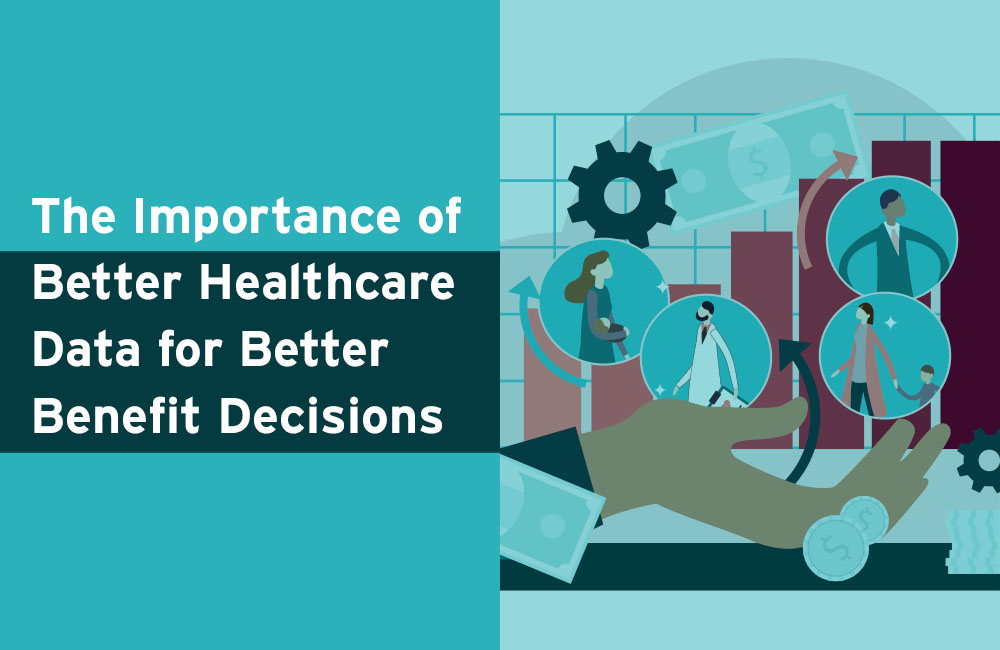
The Importance of Better Healthcare Data for Better Benefit Decisions
Does wading through data seem overwhelming or exhausting? The Alliance hosted a panel of experienced benefits professionals who said they used to feel this way. That is until they saw the immense opportunities better healthcare data could provide to make better benefits decisions. Not only could they save money, but they could use the information to design smarter benefit plans and create ways to support better healthcare decisions for employees and their families. The payoffs – in employee productivity, benefits expense, and overall wellness – have been remarkable.
The Alliance Healthcare Data
The Alliance is committed to collecting data and developing tools to help our member-employers control their health benefit costs. Now that transparency of information is getting more attention at the federal level, and employers have a fiduciary responsibility to monitor health spending and make sure dollars are being used wisely, it’s more critical than ever that they put these tools to work for them.
Ryan Peterson, Director of Analytics at The Alliance, kicked off the event by explaining that an underlying tenet of The Alliance’s contracting philosophy is that no one provider system is the best at everything. That is why our provider contracts empower employers to steer care to the highest value providers.
The Alliance has its own price and claims data, of course, but we supplement it with a broader set of claims data that we purchase from the Wisconsin Hospital Association Information Center (700k claims/quarter) and from the Wisconsin Health Information Organization (100m claims/six months). Price data is improved by newly required public hospital price transparency files. External Link. Opens in new window. from hospitals, health systems, and health plans. This copious accumulation of data – which Peterson describes as the “raw ingredients” for deeper analysis – is stored in The Alliance data warehouse.
The Alliance then applies tools to make the data actionable. The Alliance analytics team developed the means to adjust risk and look beyond prices to compare resource use between providers. This helps us estimate and evaluate the “total cost of care.” This includes factors such as the cost of readmissions and ancillary and follow-up care. We also license Johns Hopkins tools that enable us to do many things, including applying predictive analytics to employee populations.
Employers Use This Data to Make Better Benefits Decisions
The Alliance uses its data to develop its Smarter NetworksSM offerings. This includes our Premier NetworksSM that help employers steer care to lower-cost, higher-value providers. That’s just one opportunity for employers to take advantage of The Alliance’s data expertise. Understanding the variation in hospital prices brings further opportunities for employers to save money.
When looking only at acute care hospitals and “shoppable” services, such as a lower joint MRI, The Alliance has found in-network price variations ranging from $407 to $4,213 – more than a tenfold difference. This degree of price variability is consistent across a broad range of shoppable services. We have also found that steering enrollees to certain sites of care can make a massive difference in cost. For example, imaging done at freestanding imaging centers versus hospital outpatient departments –
The Alliance can complete a Smarter HealthSM analysis of an employer-member’s data and identify the most significant cost savings opportunities. This enables The Alliance to work with employers and their consultants to design benefit plans to achieve those savings by steering shoppable care to lower-cost providers. Using data like this, our panel of experts has been able to:
- Demonstrate savings opportunities to the C-Suite and find wins for the company, employees, and their family members.
- Predict potential interventions much earlier to improve outcomes through condition management tools.
- Create effective incentives and tools for employees to make high-value decisions, lowering or even waiving out-of-pocket costs for employees. Using The Alliance Premier Network resulted in one employer’s savings of $900,000.
- Pinpoint the most significant opportunities for attack like imaging or orthopedic procedures. Then find the highest-value provider(s) that could help you save thousands of dollars per procedure.
- Define the right criteria for powerful decision-making when adopting steerage programs in health benefits and alternative sourcing.
Watch the webinar recording from this session to hear more about what data you have available to use as an employer-member of The Alliance and how our panel of experts have worked with The Alliance to analyze their data and the lessons they’ve learned through applying data to achieve savings and better care. One area of consensus among them? Using healthcare data has revealed huge opportunities to save money on benefits, which has everyone ready to dig into their healthcare data.








